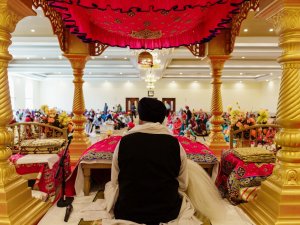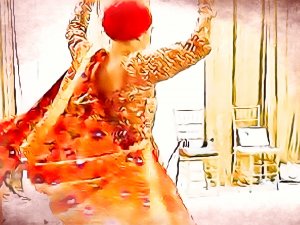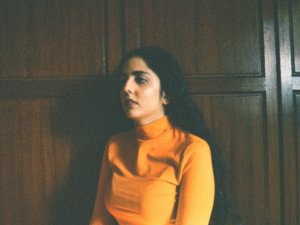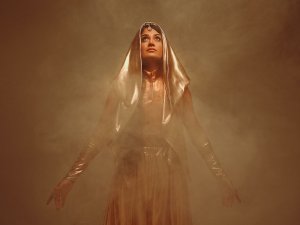Artist Anoop Caur
September 10, 2015
Art helps us develop rich, meaningful, and engaged lives. Great art allows us to see and celebrate ourselves and our own Sikh community through different lenses. "Art is the epitome of human life, the truest record of insight and feeling..." said philosopher Susanne Langer. As a the Sikh arts scene is burgeoning, we at Kaur Life applaud the Kaurs and Singhs who dive into the space and give our community pieces to enjoy that reflect our collective Sikh experience. One of those artists is Toronto based artist, Anoop Caur, who sat down with Kaur Life to share her thoughts.
KL: Explain what you do in 100 words.
AC: As a Toronto born and raised, Sikh artist, my work takes a critical view of social, political, and cultural issues today. Having explored a variety of mediums and styles in drawing, painting, and sculpting I have found my niche as a sculptor. I have experience in and feel most comfortable working in three dimensions, with a wide variety of mediums such as clay, plaster, wire, wood, and fabric. My work has been displayed at several local and international community events and I've also hosted workshops at summer camps. I currently study at the Ontario College of Art & Design, majoring in Sculpture and Installation.

KL: How and when did you get started in art?
AC: I started at a very young age. Most of my teachers noticed the significant amount of effort I put into decorating my subject folders and note-books than the homework itself. However, I didn't get serious about it until my senior year of high school. That's when I knew I wanted to pursue it as a career.
KL: How have you developed your skills and techniques?
AC: Initially I developed my skills through self-teaching and experimenting. When I realized I needed a degree in art to pursue it as a serious career path, I decided to advance my skills by applying to art school. I have learned far more through formal education than I probably could learn by myself.

KL: How would you describe your style?
AC: I don't recognize the distinct style that is present in my work however, I've been told by others that it’s very conceptual and "dream-like" at times. I however, like to experiment with different styles, media, and subject matter and let my ideas take the lead.
KL: What is your favorite medium?
AC: My absolute favorite medium is plaster and clay! I love the feel of it and how I can add and subtract from my creation and create molds and casts etc.

KL: Do you have a favorite subject? Do you pursue any themes?
AC: At the moment, I am very interested in the issues surrounding mental health. I have done works based on activism, culture, and religion however as I develop myself as an artist, I am trying to broaden my audience by researching new subject matters.
KL: Why do you create art? What drives you?
AC: I've always created art because I suck at expressing myself through other means. I am a person who feels "too much" and art has been an outlet for me to express my feelings. And when life gets rough, art is such an amazing healing technique as well.

KL: What’s your favorite part about being an artist?
AC: My favorite part about being an artist is being able to network. I get to meet so many new people, go to new places and share my work with people who can relate. It also feels great to be able to inspire others as a young south asian, female artist.
KL: What lessons of Sikhi have you learned through art?
AC: I have learned that Sikhi is what you make it. Now, this won't sit well with all Sikhs, however, I think everyone is afraid to say it because we're so used to conforming. For instance, everyone has their own relationship with Maharaj, their own way of presenting themselves or their own way of contributing to the community (i.e. financially, socially, or politically), and that’s what makes each Sikh's practice unique. I believe there is no universal definition or identity of a Sikh. Everyone is a Sikh.
Art has literally expanded my boundaries as an individual, shaped my religious views and allowed me to experience so much.

KL: What Sikh values or elements are embodied in your art or practice?
AC: Truth is the most important value in Sikhi and I try and embody that in my work. I want to stay true to myself and to my work as much as possible. I hope I never sell out like some artists do for money and fame.
KL: What do you hope your audience gets out of interacting with or viewing your art?
AC: I hope my audience experiences some type of connection and is inspired in some way.

KL: What’s your advice for young Kaurs who wish to pursue art either as a career or hobby?
AC: My advice to aspiring artists is to just do it.
There are so many lies told to instill fear in people wanting to pursue the arts, but why? Because artists can't be successful? Because you can't make money in art? Bullsh*t. That goes for the pursuit of any dream. If you suppress your inner voice, you'll never be truly free. I always say, "go with the flow, it's the only way you'll let go of your doubts and fears." Even if you fail miserably, go back and do it again. You will grow as an individual with every failure and eventually it'll lead to success. It's a slow process for some. Trust me.
KL: May I ask, why do you spell your name Caur? I’ve always been curious!
AC: I absolutely love contemporary artist, Arpana Caur. She spells her name with a 'C' and I thought it would be cool if I created a unique identity for myself by changing it as well.
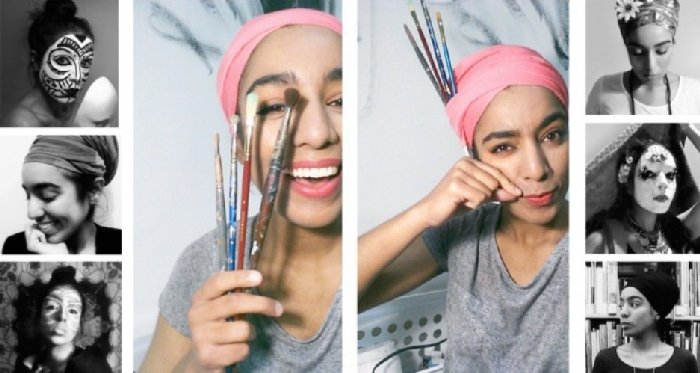
Follow Anoop Caur:



